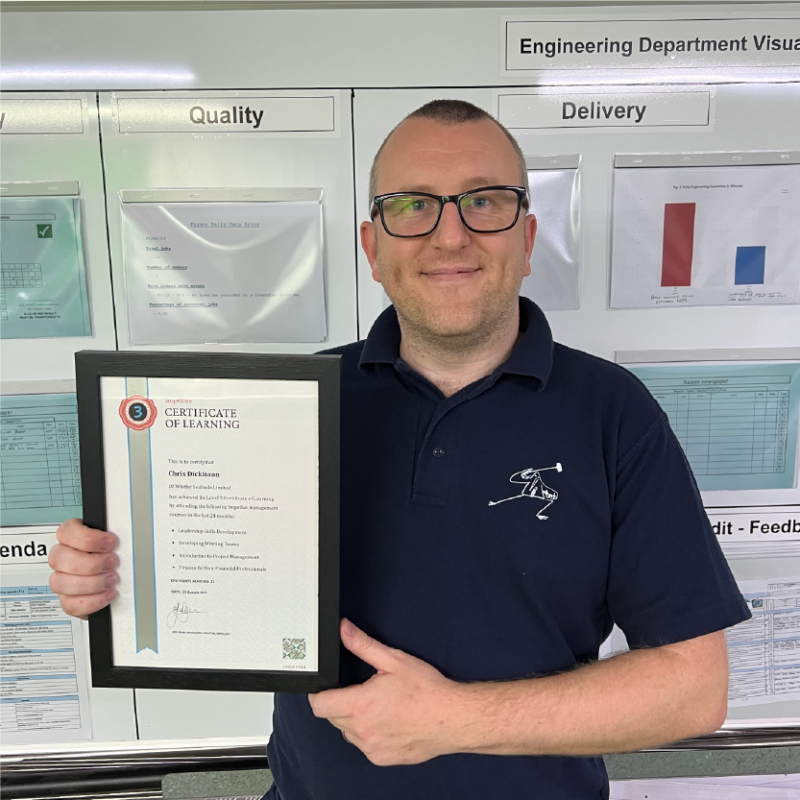How to identify training needs: bridging the skills gaps in your
organisation
Are there training gaps in your organisation? These can arise for many reasons. The good news is that once those gaps are identified, employees given the opportunity to upskill are more productive and happier in their jobs. In this article we’ll walk you through how to identify training needs within your workforce using a training needs analysis, and how to bridge the skills gap with the appropriate professional development courses.
What are skills gaps?
Skills gaps happen when there is a mismatch between the knowledge, skills or experience that are expected or required for a job, and the skills that an employee actually has. Common skills gaps often arise when an employee is promoted to a management role, or if they have worked within an organisation for a long time without undergoing regular training.
Examples of skills gaps in the workplace
Sometimes a training gap can occur because the requirements of a role change over time. For example, Sarah is an experienced website developer, but she hasn’t led a project before. Due to business demands, she is required to head up a new website build. She’s confident she has what’s needed in terms of technical skills, but for the project to be effective, she needs to work on project management skills such as leadership, time management, agile working, communication and reporting. To ensure that the project is delivered efficiently, Sarah would benefit from a PRINCE2 project management course.
You may identify training needs where a skills gap has arisen for other reasons. With the advent of new technologies, it’s common for an employee’s skills to require updating regularly as the tools needed for the job change over time. Organisational changes may require more staff to be trained in a particular area, such as sales and customer management. Or perhaps you have recruited new staff who don’t yet have all the right qualifications for the job. Some entire industries face skills shortages in key areas, so it’s easier to train employees on the job than find candidates who have those skills already.
Sometimes the skills gap you are facing is harder to quantify, with a need for ‘soft skills’ like communication or timekeeping, that aren’t so easy to identify on a CV or application form. Courses in negotiation techniques, presentation skills and effective communication are all examples of training that can help to promote confidence and improve the effectiveness of individuals in their roles.
Why bridging the training gap is key to business success
Knowledge is power, so if you can identify training needs before any issues arise, you will be one step ahead. But filling gaps in training and development isn’t just a defensive move for your business: it can be an active element in its success. Training in skills such as strategic thinking and delegation and time efficiency is a proactive way to upskill your employees for better performance throughout the organisation.
Increased productivity
If you can identify the learning and development needs among your employees and provide training to bridge the skills gap, you’ll have a workforce that’s better equipped to do the job. Fewer mistakes and faster work will lead to an overall
increase in productivity for your business.
Be proactive, not reactive
By identifying training needs ahead of time, you can plan and prioritise training according to your business goals. So instead of putting everyone on the same course, you can tailor each employee’s training to suit the needs of your
organisation.
Improve wellbeing in the workplace
Numerous studies have identified a link between access to training and development opportunities and job satisfaction. Empowering your employees with the skills they need to thrive will make for a happier workforce.
Retain ambitious employees
Research shows that 94% of employees would stay longer at an organisation that prioritised their training and development. Given the expense of recruitment, it makes sense to upskill your existing workforce rather than spending your resources on finding new blood.
Using a training needs analysis to identify learning and development needs
The most efficient way to identify training needs is through a training needs analysis. This is a systematic and methodical approach to identifying training gaps by taking into account three factors:
- Organisational training needs
- Departmental training needs
- Individual training needs
Step 1: identifying training needs at organisational level
This is an overall look at the skills that are required within the business as a whole. You will need to look at your strategy as a company, considering your overall mission and values.
- A SWOT analysis (Strengths, Weaknesses, Opportunities and Threats) can identify the skills and abilities that your organisation needs to nurture
- Role profiles for common positions within the company can set out the key competencies that those holding these roles are expected to have
Step 2: assess the current situation
Now that you have a better understanding of the ideal skill set within your teams, it’s important to get a picture of how things stand right now. There are many different ways to gather information about each department’s strengths, weaknesses and training requirements:
- Carry out surveys aimed at individuals, asking them directly what their training needs are
- Ask team members to feed back on each other’s skill shortages
- Maintain a database of each team member’s learning
Step 3: identify training needs and plan how you will fill the gap
Armed with the information you have gathered on the required skills within your organisation and how the current situation matches up, you will be able to identify any skills discrepancies and begin to plan future training to bridge these gaps.
- Consider organisational priorities at all times: the first training scheduled should be the training that will benefit the business the most
- Create a timeline for training so that you know when it needs to be completed
Business performance training from Impellus
If you identify training needs concerning management, leadership or project management, Impellus can help you bridge the gap.























